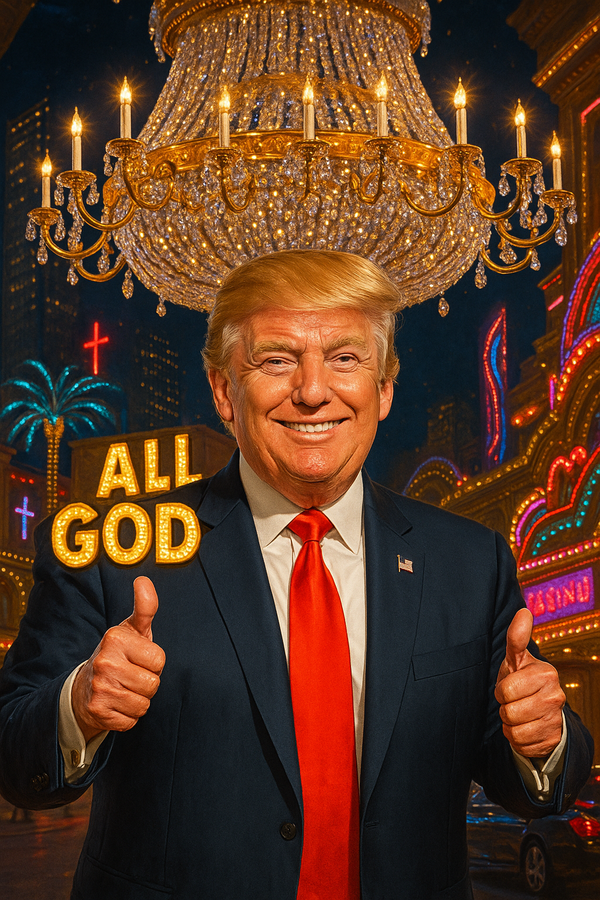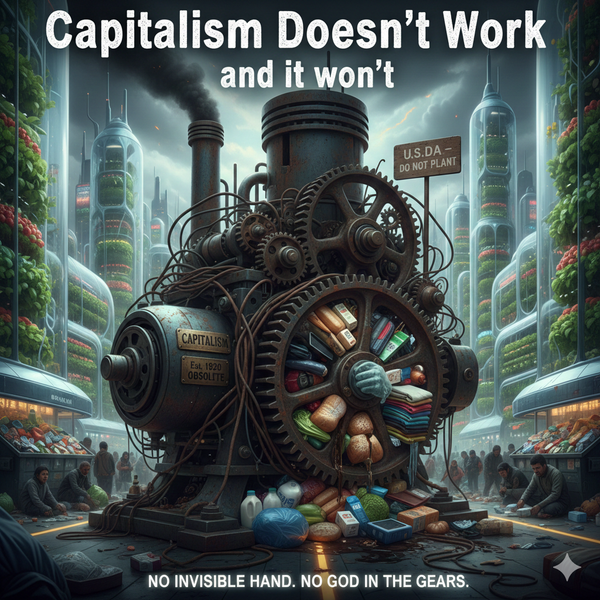Decoding Economic Reality
or else
Everyone feels the economy. Few get to see how it actually works. This piece cuts through the slogans, breaks down what matters, and explains why the system isn’t broken—it’s just working for someone else.
Americans live inside an economic system that affects every part of daily life—what they earn, what they pay, what they can afford. But how it actually works is complicated, often confusing, and rarely explained in a way that feels relevant. It’s not secret. It’s just technical, and understanding it requires either digging in—or trusting an expert, which fewer and fewer people are willing to do.
Thanks for reading Burnt Ground! Subscribe for free to receive new posts and support my work.
Take the idea that the government should “balance its budget like a household.” Sounds reasonable. But families can’t print money or issue bonds. Governments can. That doesn’t mean they can spend freely forever, but it does mean deficit spending isn’t reckless, it’s a tool. When times are tough, it’s what keeps bridges from collapsing and paychecks from vanishing.
Then there’s the debt. It gets treated like a looming disaster, but most of it is internal money the government owes to itself, like Social Security trust funds. A large portion is held by American investors, pensions, and banks. Only about a quarter is owned by foreign countries. Even so, U.S. Treasury bonds remain one of the safest investments on the planet. The U.S. has never defaulted. That matters.
A better way to understand debt is by looking at it relative to the size of the economy—debt-to-GDP. It’s like comparing a mortgage to your income. A $400,000 loan sounds terrifying—unless you're making $200,000 a year. Right now, the U.S. debt-to-GDP ratio hovers around 120%. That’s high, but not unheard of. Japan’s is over 250%. The U.K. is over 100%. Debt isn’t good or bad on its own—it depends on what we’re getting for it, and whether we’re still growing.
You wouldn’t know any of this from watching cable news.
What you’ll hear instead: the stock market is booming, so the economy must be great. But for most people, the stock market is a lottery to which they don’t hold a ticket. The top 10% of Americans own 90% of all stocks. For everyone else, the economy shows up in rent, gas, groceries, and credit card statements—not in a Dow ticker.
Inflation? It didn’t come from one place. Sure, there were stimulus checks. But there were also broken supply chains, volatile oil markets, and companies raising prices simply because they could. Some of it was necessary. Some of it wasn’t.
And here’s something that gets overlooked: most wealth in this country isn’t earned—it’s inherited. The American Dream still exists, but more often it rides in a trust fund than arrives by hard work alone. Social mobility has slowed since the 1970s. Not because people stopped trying. But because of the end of progressive taxation.
Meanwhile, the real engine of the economy isn’t defense contractors or Silicon Valley. It’s everyday people buying everyday things. Consumer spending accounts for more than 70% of U.S. GDP. If wages don’t keep up with prices, the engine sputters.
Now let’s talk about airplanes.
Say you just made $10 million, and the top marginal tax rate is 50%. You can either pay $5 million in taxes and keep the rest—or go buy something big, like a jet. What do you do?
You buy the plane.
Because if you don’t spend it, a big portion of it goes to taxes. And those taxes, ideally, go to the betterment of civilization—roads, schools, public safety, basic services. But from the spender’s point of view, the money is leaving their control either way. So, they keep it moving. They build something. They reinvest. That’s what progressive taxation encourages: not punishment, but participation.
You can usually spot a third-world country by its tax code. No real progressive structure. The poor pay everything. The rich almost nothing. Infrastructure crumbles. Public trust disappears. The middle class either shrinks or leaves.
That’s not just unfair. It’s unstable.
Americans aren’t clueless. But they are overwhelmed. And when the economy is explained in charts, jargon, and partisan spin, it becomes easier to tune out. That confusion may not be intentional, but it benefits the people who already know the rules—and know how to bend them.
Understanding a few basics won’t change everything. But it helps. It helps people ask better questions, reject cheap slogans, and see who’s actually writing the rules.
The economy isn’t mysterious.
It’s a choice.
And we should choose better.
Thanks for reading Burnt Ground! Subscribe for free to receive new posts and support my work.




